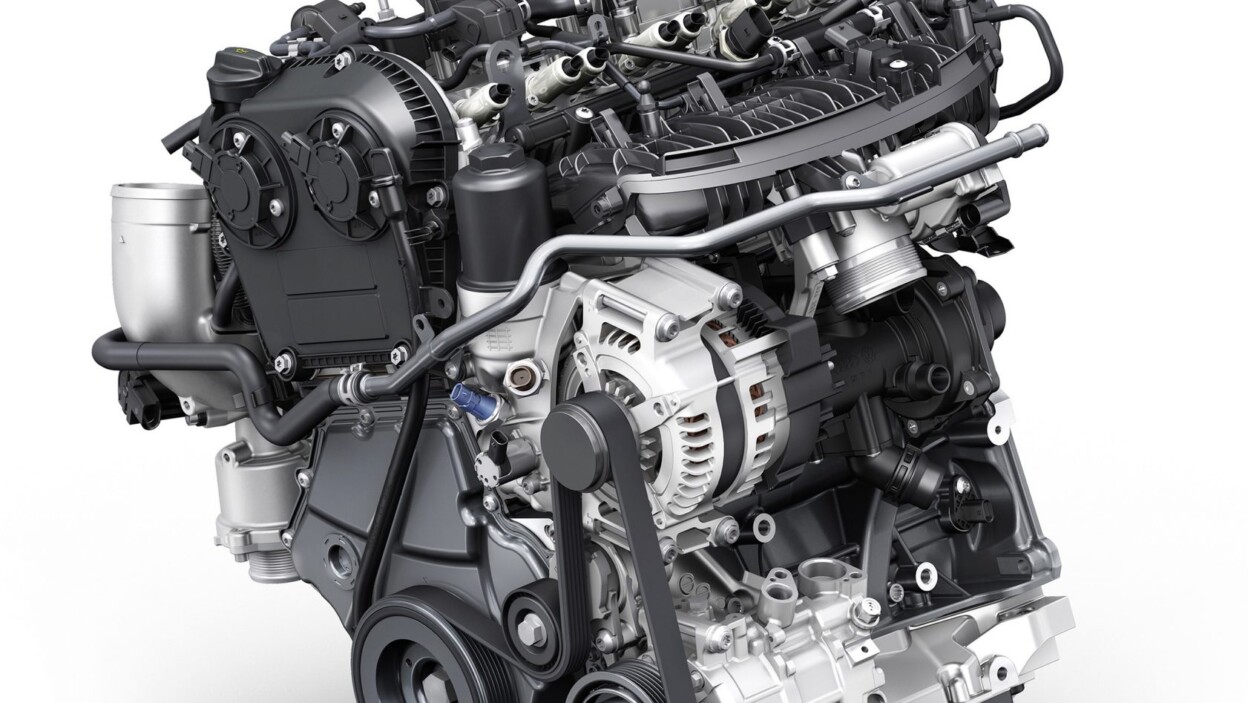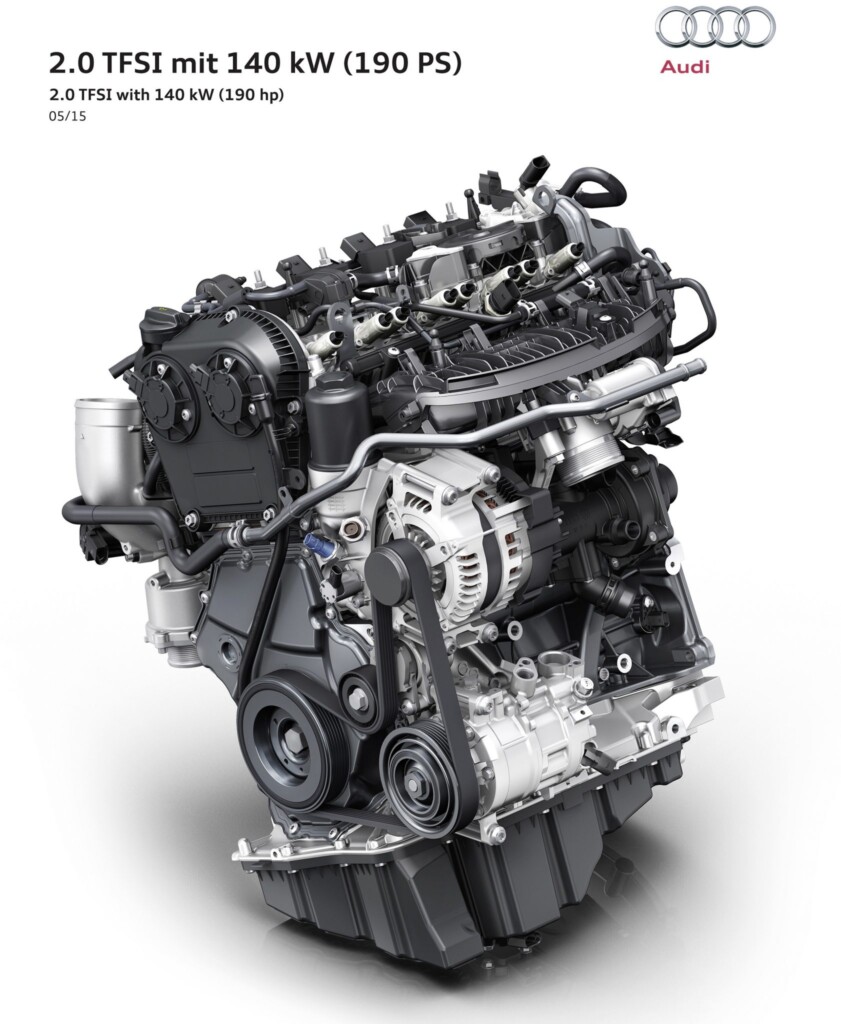Audi recently showcased it’s new 2.0 TFSI with 190 hp which will be used in the next generation of the A4. It’s current A4 is now rated at 225hp and 350Nm, so what the heck Audi? Whilst other car manufacturers are making their engines more efficient and harnessing more power from it, Audi on the other hand decided to play the efficient game and detune the engine.
Over ten years ago, Audi was the first manufacturer worldwide to bring the TFSI engine with turbocharging and direct injection into series production. This made the brand with the four rings the trendsetter in downsizing and downspeeding. “We’re now taking a crucial step further with rightsizing,” said Prof. Dr. Ulrich Hackenberg, Member of the Board of Management for Technical Development at AUDI AG. The reduction in displacement and engine speed can be optimally effective only if reasonably related to the vehicle class and the customers’ everyday use, explains the Technical Director. “Rightsizing thus involves the optimal interplay of vehicle class, displacement, output, torque and efficiency characteristics under everyday conditions. Our new 2.0 TFSI is a prime example of Vorsprung durch Technik.”
The four-cylinder engine draws 190 hp of power and 320 Nm of torque from a displacement of 1,984 cc (the current one now produces 225 hp and 350 Nm). Because the high torque is applied in a wide speed range of 1,450 to 4,400 rpm, every customer will benefit from the constantly accessible, high pulling power of the engine. The engine also boasts of groundbreaking low fuel consumption levels. With consumption levels less than 5.0 l/100 km in the NEDC, the four-cylinder engine clearly undercuts its predecessor and comparable competitors.
Technology in detail:
The breakthrough of the 2.0 TFSI lies in a new combustion method. At its core its principle is comparable to the Miller cycle. Audi engineers have further developed that method in crucial ways, however. The increase in efficiency is based on the following factors:
- The intake time has been significantly shortened (140° crank angle (CA) rather than 190 to 200° CA).
- Owing to a higher boost pressure on the inlet side, the engine attains optimal cylinder charges despite the shorter intake time.
- The intake valve also closes earlier – well before the bottom dead center is reached. This lowers the medium pressure, allowing a high, efficiency-boosting compression ratio.
- In the partial load range, an additional injection upstream from the intake valve yields an efficient mixture formation that is already complemented by the direct injection in the intake manifold and in the combustion chamber.
- The Audi Valvelift System (AVS) on the inlet side allows a short intake time at partial load and a longer time at higher loads (full load: 170° CA).
Dr. Stefan Knirsch, Head of Engine Development at Audi, sums up the benefits of the new engine: “Thanks to this rightsizing approach, the new engine enjoys the consumption benefits of a downsizing engine in partial load operation, while at higher loads it has the advantages of a large-displacement engine. The result is optimal efficiency and performance characteristics across the entire engine speed range.”
Audi themselves have managed to keep the weight of the engine to 140 kg. They also included several efficient technologies such as the coolant flow is controlled so as to greatly shorten the engine warm-up time. Contributing to this benefit is also the exhaust manifold, integrated in the cylinder head. The consistent reduction of friction as well as the use of low-friction engine oil (0W-20) also increases efficiency.
The comprehensive package of high-tech solutions makes the new 2.0 TFSI a real high-efficiency engine that sets a new benchmark in its segment. Audi will be introducing the new generation of engines first in the new Audi A4, and then in other model series.
In short, with a lighter engine as well as the new platform in which the A4 B9 will sit on, the overall weight of the car should be significantly less such that the decrease in power isn’t that much affected. I do sincerely hope that it is true.
Other posts by AF Newsdesk







